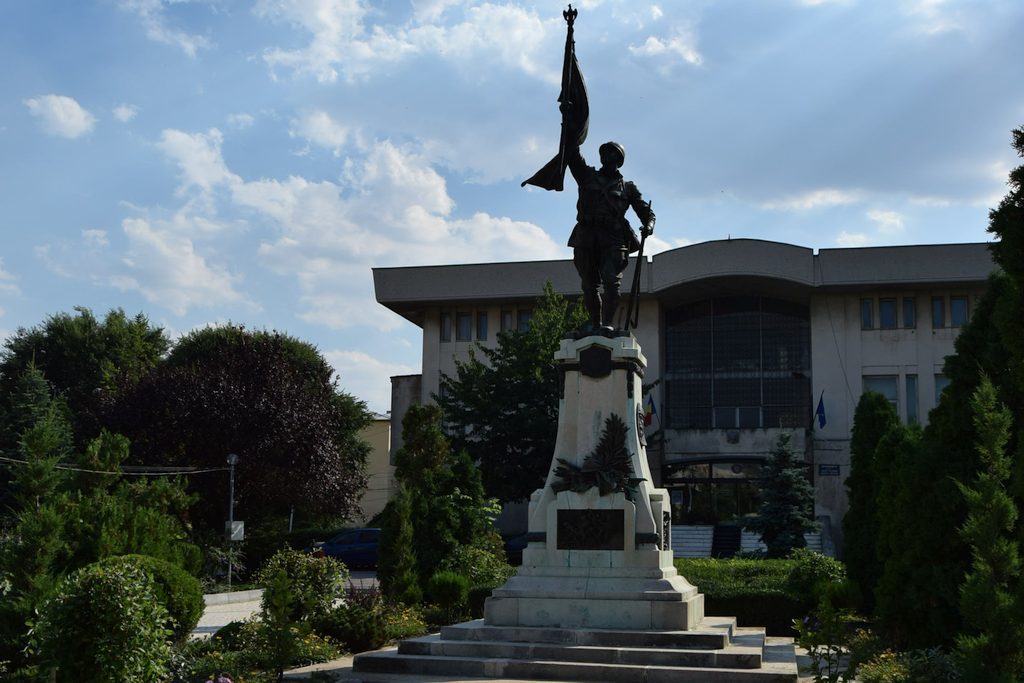

The monument dedicated to the First World War was made by sculptor Spiridon Georgescu (1887-1974), a native of Poseşti Commune, in Prahova County.
At the outbreak of World War I, internally, Romania was a country where even if democratic regime institutions were present, the functioning of the state was far from Western standards. The ecomomy had an archaic and anachronistic structure, based on a traditional subsistence agriculture and with a low productivity level.
The international system was marked in the late nineteenth and early twentieth century by the rivalry between the great powers for control of non-European world. In Europe, Germany had become the leading power and its behavior on the continent led to an extraordinary disintegration and recomposition of alliances compared to previous decades. Romania itself, was caught in these power games. On the one hand it was an object of rivalry of the neighboring empires, which had prepared plans for annexation for the various parts of its territory, on the other hand Romania seeked to create conditions conducive to the fulfillment of the national ideal, gathering in a single state all Romanian historical provinces. From the military point of view, Romania came after a victory without glory in the Second Balkan War the euphoria of victory making it to pass easily over the shortcomings manifested in the military leadership, organization and training of troops and especially of equipping with weaponry and modern combat equipment. Although linked to the Austro-Hungarian Empire by a secret treaty of alliance since 1883, Romania chooses to declare itself neutral when hostilities broke out in July 1914 relying on the interpretation of clauses relating to “casus foederis”. In the years of neutrality Liberal government led by Ion I.C. Brătianu adopted an attitude of expectation, despite the fact that all parties involved in the conflict have pressured Romania combined with promises to join them. In August 1916, Romania received an ultimatum to decide whether to join the Entente “now or never”. Under the pressure of demand ultimatum, the Romanian government accepts to enter the war on the Entente side, although the situation on the fronts of struggle was not a favorable one. After a series of rapid tactical victories in Transilvania against some Austro-Hungarianforces overwhelmed in terms of numbers, the Romanian Army will suffer in the fall of 1916 a series of crushing defeat, which will force the state authorities to take refuge in Moldova, allowing the enemy to occupy two-thirds of the country, including the capital Bucharest. The situation on the eastern front has evolved in a negative way, so that after Russia signed the Peace of Brest-Litovsk with the Central Powers, Romania was forced to ask for an armistice and then be forced to leave the war and sign a separate peace in humiliating conditions in the spring of 1918. Fortunately, the refusal of King Ferdinand, who postponed indefinitely the formal gesture to sign the treaty, made possible the resumption of hostilities in the last two days of the war, in this way preserving Romania’s status as belligerent State Peace Conference in Paris.


